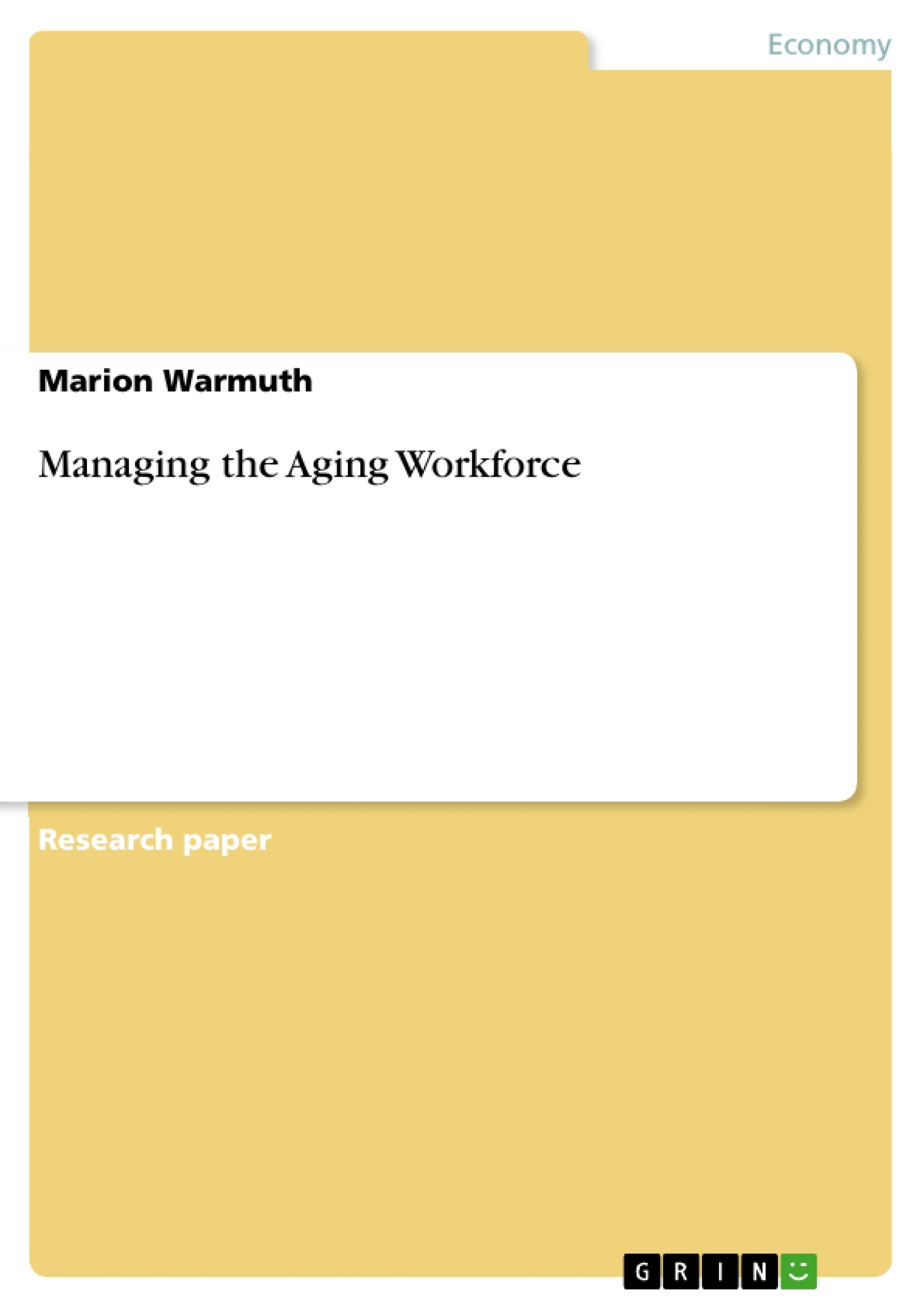The aim of this paper is to attract attention towards the changing demographic circum-stances in developed countries and the impact on the organizations due to the growing portion of elderly at work. It illustrates why companies need to adapt their business strategies to the aging workforce and how they can utilize this group better and longer. The main focus is on Germany as a representation for all other countries.
As a starting point the challenges that arise from the changing labor market situation are exposed. The necessary change of mind-set regarding older people in organiza-tions resulting from the aging workforce trend is discussed in the next part of the paper. Afterwards four selected activity fields, that influence the success of managing the aging workforce immensely, are elaborated together with proposals how to handle the different issues in the fields. In the following part of the paper a benchmark example from a successfully realized activity that helps to manage the aging workforce supports the need for organizations to react to the current labor market trend and present ideas on the real life implementation. This example is followed by the conclusion.
Inhaltsverzeichnis (Table of Contents)
- Introduction
- Intention and Structure of the Paper
- Demographic Change and its Impact
- Challenges Arising from an Aging Workforce
- Competition in Hiring Qualified Personnel
- Pressure for Innovation and Globalization
- Increasing Costs
- Changing Perspective on Older Workers
- Prejudices and Discrimination of Older Employees
- Appreciation of the Problem and New Vision
- Activity Fields and Potential Problem Solutions
- Recruitment and Hiring
- Low Level of Employment of Older People
- Recruitment Behavior of Organizations
- Reorientation of the Recruitment Policies
- Training and Development
- Productivity and Learning Aptitude of Older Workers
- Adequate Training Programs
- Lifelong Learning and Employability
- Motivation
- Concepts of Motivation
- Motivation of Older Employees
- Work Environment and Health
- Work Place Design
- Work Schedule Design
- Workplace Health Promotion
- ING-DiBa: A Benchmark Example of Age Management
- Conclusion
Zielsetzung und Themenschwerpunkte (Objectives and Key Themes)
This paper explores the challenges and opportunities presented by an aging workforce in developed countries, particularly in Germany. It highlights the need for companies to adapt their business strategies to accommodate this demographic shift and outlines ways to effectively utilize older workers. The paper emphasizes the importance of a changing perspective on older workers within organizations and examines various activity fields that influence the success of managing an aging workforce.- Demographic change and its impact on the workforce
- Challenges of an aging workforce, including competition for qualified personnel, pressure for innovation and globalization, and increasing costs
- Changing attitudes and perceptions towards older employees within organizations
- Activity fields crucial for managing an aging workforce, such as recruitment and hiring, training and development, motivation, and work environment and health
- Real-world examples and best practices for successful age management
Zusammenfassung der Kapitel (Chapter Summaries)
The introduction provides an overview of the paper's purpose and structure, emphasizing the demographic context of an aging workforce. It highlights the impact of demographic trends, such as decreasing birth rates, increasing life expectancy, and the baby-boom generation, on the age structure of the workforce. The chapter also discusses the significance of Germany as a representative case study. The second chapter delves into the challenges associated with an aging workforce. It explores competition for qualified personnel, the pressure for innovation and globalization in a changing labor market, and the increasing costs associated with an older workforce. The third chapter addresses the changing perspective on older workers within organizations. It examines prejudices and discrimination faced by older employees and discusses the need for a shift in mindset to appreciate the value and skills of experienced workers. The fourth chapter examines various activity fields that influence the success of managing an aging workforce. These include recruitment and hiring, training and development, motivation, and work environment and health. The chapter offers specific solutions and approaches for each field.Schlüsselwörter (Keywords)
The paper focuses on key concepts related to the aging workforce, including demographic change, labor market trends, organizational strategies, age management, recruitment, training, motivation, workplace health, and best practices.- Quote paper
- Marion Warmuth (Author), 2008, Managing the Aging Workforce, Munich, GRIN Verlag, https://www.grin.com/document/114278



